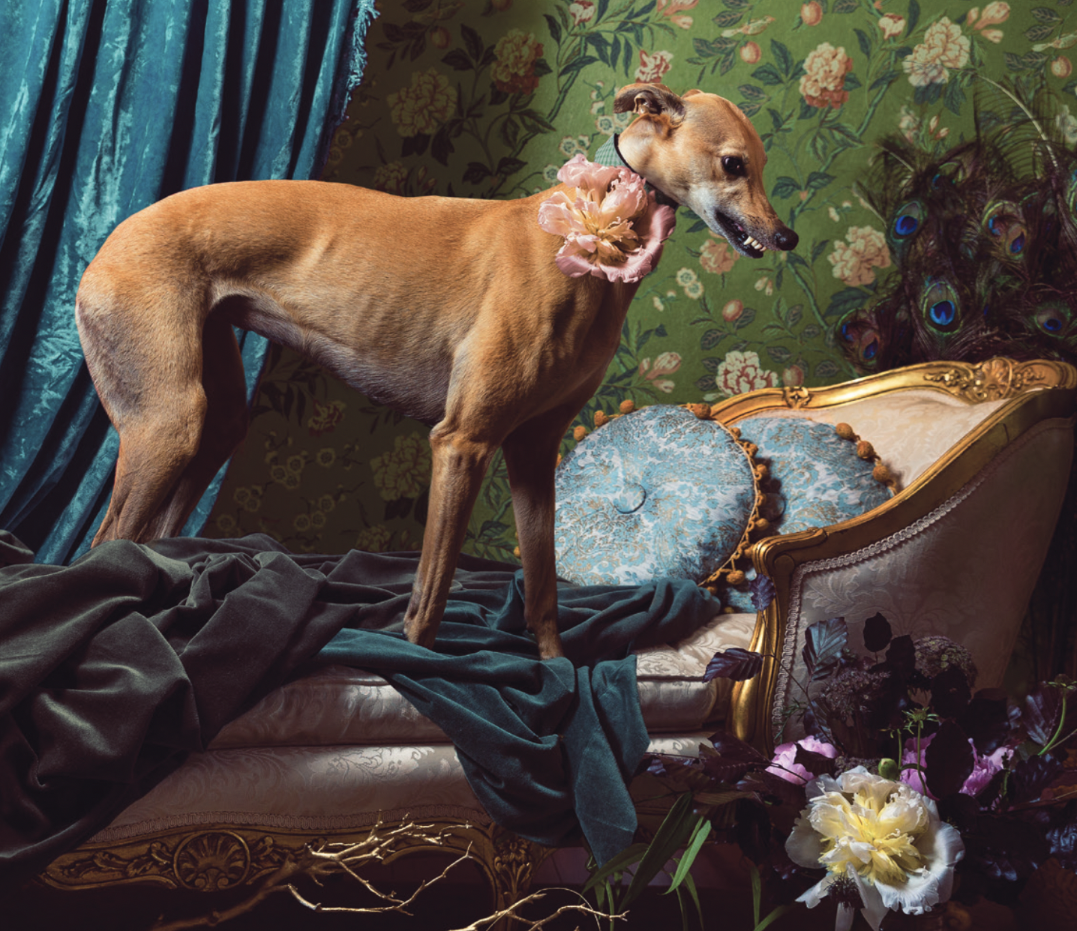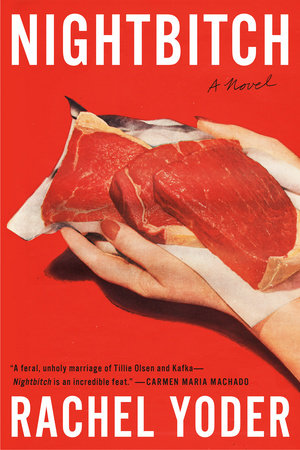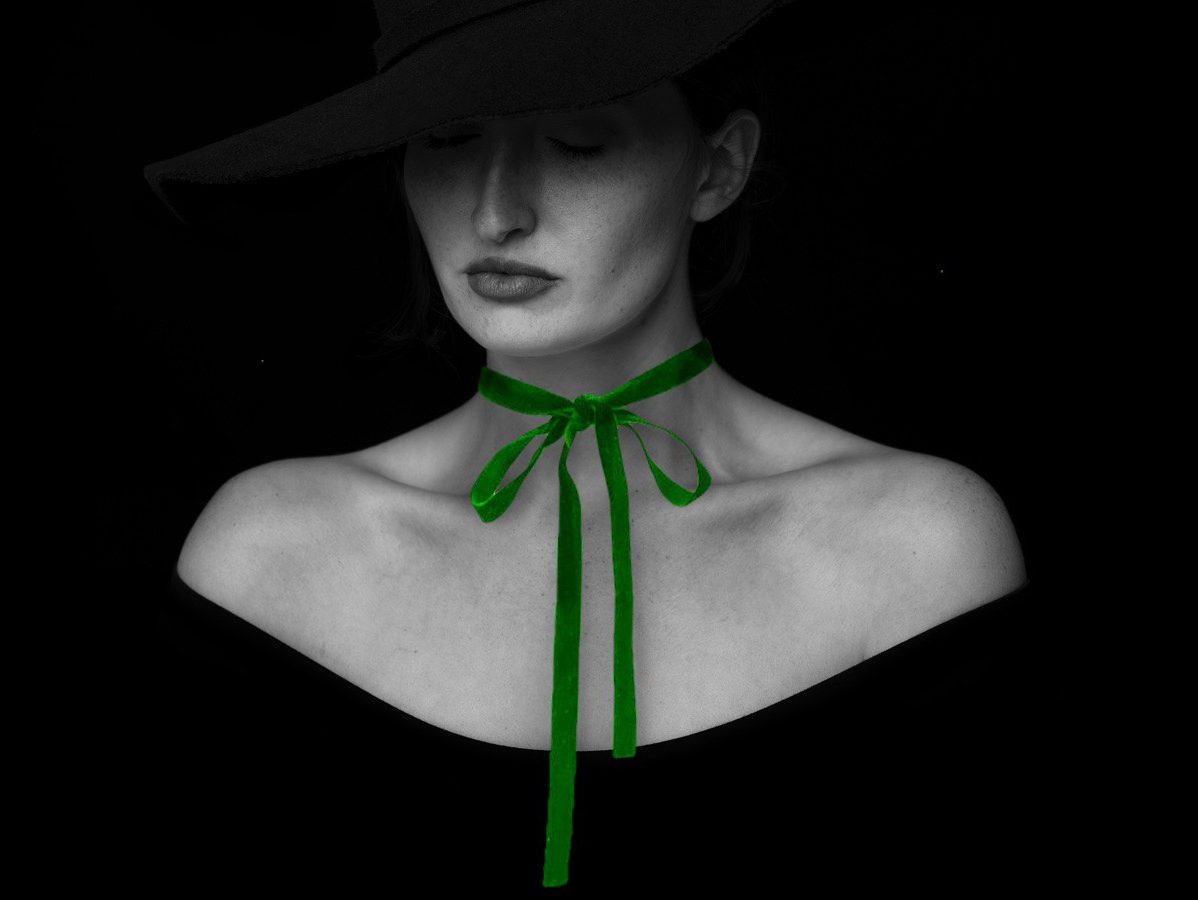Books & Culture
I Am Mother, Hear Me Howl
Rachel Yoder’s “Nightbitch” teaches us that embracing female rage tells a more complete story of womanhood

The first time I saw artist Martha Rosler’s “Semiotics of the Kitchen,” I laughed. Made in 1975, the video depicts a young Rosler wearing a long black dress and apron as she stands in a traditional kitchen. Cooking utensils are laid out on the table in front of her, and with a completely emotionless face, Rosler displays for the camera one utensil for each letter of the alphabet—A for apron, B for bowl, C for chopper, etc. Her face remains affectless throughout the video, but as she demonstrates how to use each tool, her motions become more and more aggressive. An ice pick is speared fitfully into the wooden tabletop and a knife, held like a weapon, is stabbed violently into the air. Even seemingly innocent tools like ladles and measuring spoons are displayed with a ferociousness that seems comical until it isn’t. The video ends with Rosler spelling out the final letters of the alphabet “YMCA” style while holding a knife in each hand. As the camera zooms out, she crosses her arms and shrugs as if to say to her viewers, “What of it?”
My first viewing of Rosler’s presentation left me so stunned that I found myself watching it repeatedly. The piece is brilliant in its commentary about the assumption that domestic work is women’s work, but what struck me most was Rosler’s lack of facial emotion throughout the entire piece. It’s precisely this lack that led me to laughing through the first handful of letters until I eventually realized her emotionless face was actually more terrifying than funny. All her passion was channeled into her movements as she juiced an imaginary lemon, cracked imaginary nuts. It was as if her anger—the anger of the woman relegated to so called “traditional” women’s work—could only be showed through her gestures and actions rather than with her own face and voice, and even then, despite the anger, she still had to continue working.
All her passion was channeled into her movements as she juiced an imaginary lemon, cracked imaginary nuts.
As a society, we know that women are angry. Still, we as women are expected to keep this anger close to us like a secret. If we ever do let it slip out, we are labeled “hysterical,” and “crazy”—descriptions that are meant to discredit us and our pent-up rage. Rachel Yoder’s recent debut book Nightbitch explores this anger through her main character, a woman so angry that she believes she is turning into a dog.
A new mother of a young boy, Nightbitch—for that is the name she gives herself—has left her “dream job” of “running a community [art] gallery” in order to stay home full time with her son—a gendered choice made by Yoder that feels deliberate amongst the book’s commentary on women’s work—while her husband, a man who makes far more money than she ever did, travels nearly full time throughout the week for his job as an engineer. For much of the week, Nightbitch lives like a single, stay-at-home mom, filling her days by taking her son to mundane social activities and trying to get him to fall asleep in his own bed. She is exhausted from this mother work, but when her husband comes home on the weekends, she finds that her work does not stop even though there are now two adults able to care for their only child instead of just her.
When Nightbitch tells her husband she suspects she might be turning into a dog, he thinks she is being funny. He does not believe that the mysterious lump on her lower back is really the beginnings of a tail, and he brushes off her concerns about a large patch of hair that has begun sprouting near the nape of her neck. Still, Nightbitch remains convinced of her canine attributes. Throughout her days alone with her child, Nightbitch quietly seethes over the humdrum routine of childcare that has become her life, and she loathes the group of mothers that often attend the local library’s “Book Babies” program. To her, these mothers appear like perfect, put together moms, fully dedicated to their children. She despises them for their seeming lack of struggle, and she tries to avoid them at all costs. However, one day, a pack of dogs who she believes to be the Book Babies mothers in disguise, show up on her front lawn and begin coaxing her into a new, dogged way of life.
She develops a taste for raw meat and begins going out at night to run wild and naked through the neighborhood.
The crux of Nightbitch revolves around Nightbitch’s transformation into a domesticated dog. She develops a taste for raw meat and begins going out at night to run wild and naked through the neighborhood. During these outings, she is a savage beast hunting small animals and capturing them with her bare teeth. She is full of rage and desire, her pent-up emotions from the day spilling out into her dog form. She thinks to herself that “she likes the idea of being a dog, because she can bark and snarl and not have to justify it,” and “if she could not be part of the world of ambition and money and careers, she want[s] to leave it behind entirely and recede into the wildness of her deepest dreams, of her corporeal yearning.” Being a dog is therapeutic for her. It allows her her anger without denying her herself.
Nightbitch can be seen as a domestic take on the werewolf parable, but instead Nightbitch turns into a weredog. Her motherness, that thing about her that is devoted to caring for and nurturing her child, keeps her from morphing into the wild animal of a wolf—her domestication and motherly warmth still present in the form of a common house pet. This domesticated transformation only adds to the idea that mothers, much like our everyday canine companions, are always expected to be a source of comfort and guardianship, as if this house-trained lifestyle is precisely what women have been bred for. Still, her transformation is not without its savageness, a trait she shares with the many female werewolves throughout film.
Women have a lot to be angry about. From a very early age, we’re taught to think of ourselves as the lesser sex. We learn that our bodies aren’t truly our own but rather the property of any boy or man who feels attracted to us. We become accustomed to cat calls and lewd remarks thrown our way, and every woman understands the experience of being told by a stranger that we should smile more. Magazines and advertisements tell us how we should present our bodies. We dread weight gain and blemished skin. We learn to apply makeup so we can appear more attractive and desirable to others. If we aren’t married by a certain age, we’re asked why? If we are married, we’re asked how soon before we have kids? If, God forbid, we decide not to do either of those things, we’re called “selfish,” as if our bodies were never really ours to inhabit but rather nothing more than a vessel for the men in our lives to fill up with children. If we do have children, we are expected to devote everything to them, and if we get angry or frustrated with our newfound lack of self, we are called “bad mothers” and looked at with disdain and pity. If we are women of color or trans women or both, we are constantly looked at with suspicion.
In Soraya Chemaly’s book Rage Becomes Her, she explains, “there is no time of life when [women’s] anger is acceptable. Teenage girls are spoiled, silly, or moody for standing up for themselves. Older women, fed up and saying so, are bitter castrators. Angry women are butches, lesbians, and man haters. We are called Sad Asian Girls, Hot-tempered Latinas, Crazy White Women, and Angry Black Women. It goes without saying that “angry women” are “ugly women,” the cardinal sin in a world where women’s worth, safety, and glory are reliant on their sexual and reproductive value to men around them.” So yes, women are angry and without anywhere to channel our anger, it’s no wonder that women like Nightbitch dream about turning into wolves.
The history of the werewolf dates back centuries, and the depiction of the werewolf in literature and film remains a popular tale today. Typically, when a werewolf is mentioned in stories, it’s frequently portrayed as a man who turns into a wolf-like creature on the night of a full moon. It’s common knowledge that werewolves can only be killed with silver bullets, and if you’re bit by a werewolf but not killed, you, too, will join them in their savagery. Female werewolves are rarely portrayed, but when they are, they typically seem to embrace their transformation rather than fear it like their male counterparts. If we look at films like Ginger Snaps and Trick ‘r Treat—both of which portray female werewolves in one way or another— we find groups of women utterly unafraid of the rage of the wolf that resides within.
We are called Sad Asian Girls, Hot-tempered Latinas, Crazy White Women, and Angry Black Women.
In the cult classic Ginger Snaps, two teenage sisters Brigitte and Ginger are forced to reckon with Ginger’s transformation into not just a woman but also a werewolf. Bitten by a werewolf on the night she gets her period for the first time, she begins transforming into a beast. At first, she’s terrified of the changes—an increase in body hair, sharpened teeth and nails, and the presence of a tail—but as Brigitte races to try and find a cure for Ginger’s transformation, Ginger begins to find herself enticed by her inevitable wolf-like form. “It feels so good, Brigitte,” she tells her sister. “I’m a god damn force of nature. I feel like I could do just about anything.”
Before getting bit by a werewolf, Ginger and Brigitte were social outcasts. Neither were considered attractive by society’s standards, and they actively avoided everything they perceived to be feminine and pure. But as soon as Ginger begins menstruating and boys begin to notice her, it’s clear that her life as an innocent girl is over. Thus, she is faced with a choice: allow herself to succumb to the societal expectations of women or channel her rage into the werewolf inside of her, taking full control over herself, her emotions, and everyone in her life.
To some, Ginger’s choice might read as a lack of control, but I don’t think so. Much like Nightbitch and her recently pregnant body, Ginger’s body is going through a hormonal transformation (not just a werewolf one). Like Nightbitch, these alterations have an effect on Ginger but also on those around her, signaling to others that both women have changed. For Ginger, this means she’s now perceived as a sexual being, something to be desired. For Nightbitch, she is viewed as a mother body, an objectified version of the woman whose only purpose is to feed and care for her young. Because they are both now perceived more as object than as human being, Ginger and Nightbitch come to understand their inner rage. Described as “that single, white-hot light at the center of the darkness of herself,” Nightbitch, like Ginger, decides to make something of this newfound fury by embracing their rage and transforming into their respective dog and wolf forms. By doing so, they find power in themselves, and it’s precisely this power that gives them the strength they need to stand up to society’s standards and fight back.
Puberty and pregnancy aren’t the only ways women are objectified. We also find ourselves diminished to only our bodies by way of what we wear, eat, shave or don’t shave. Often, female rage goes hand in hand with society’s constant messaging that we must look and behave certain ways to be desired, as if being desired is the only goal. Trick ‘r Treat, a horror anthology film written and directed by Michael Dougherty, includes a story about Laurie, a young teenage girl headed to a party in the woods with her sister and friends on Halloween night. Forced to wear a sexualized Red Riding Hood costume—a nod, no doubt, to the notorious fairytale famously involving the Big Bad Wolf—Laurie seems uncomfortable. Not used to being sexualized in this way, she travels to the party alone, and along the way, she is attacked by a local serial killer. Just when the viewer thinks she’s about to be killed, her and her friends reveal themselves to be a pack of female werewolves bent on luring unsuspecting boys and men to the secluded forest where they murder them before transforming from their traditionally feminine bodies into savage, rageful beasts. The women feed on the bodies of the men all while their own bodies crackle and break into hairy, clawed wolves. Having shed their human forms, the women gain power from their “ugly” wolf selves, suggesting that the typical female form—bodies that are constantly subjected to standards that encourage hairlessness, thin figures, and perfect skin—holds women back from embracing their true, savage selves.
Her body, no longer reduced to society’s standards of femininity, is free to be and do whatever she pleases.
When Nightbitch turns into a wolf, she is no longer “that woman anymore, that mother and wife.” She imagines herself ripping out the throats of “men asleep on benches” in the park, and she’s “overwhelmed by her strength.” Her body, no longer reduced to society’s standards of femininity, is free to be and do whatever she pleases. The female body is always being critiqued, but if the female body turns into a werewolf, it can no longer be subjected to criticisms simply because the werewolf body embraces everything that society tells a woman she must reject. Entirely covered in hair, there is no such thing as a Brazilian bikini wax for a werewolf. Mani-pedis do not work on a werewolf’s tough nails, and you can forget about using a pumice stone on rough patches of werewolf skin. To willingly choose the werewolf body is to systematically reject society’s chosen female one, and this choice (or rejection) almost always leads the woman to a place of power. Female werewolves are becoming more and more popular in literature and film. The Howling and its sequel depict strong, rage driven female werewolves that refuse to give up their wolf-like powers. The Company of Wolves can be seen as a precursor of sorts to Ginger Snaps, exploring female adolescence by way of the werewolf parable. YA fiction is filled with stories depicting girls and women turning into wolves, and a handful of comics display similar tales. In Emil Ferris’ breathtaking graphic novel My Favorite Thing is Monsters, 10-year-old Karen Reyes draws herself in her notebooks as a small, unassuming wolf girl, and the release of Maggie Tokuda-Hall’s latest graphic novel Squad tells the tale of four adolescent girls who use their werewolf powers to punish boys for their crimes against other girls. Much like Nightbitch, these stories all embrace the idea of women and girls turning into werewolves to regain a sense of power in the world. In Rage Becomes Her, Chemaly describes the often “common belief that, as women, we are all mothers in waiting, and that, as mothers, we will happily sacrifice our bodies, health, work, and sense of selves,” but this outdated way of thinking simply isn’t true. Women are raging. We’re angry and we’re tired of looking for ways to displace our anger without getting blamed or discredited. Like Nightbitch, many of us “[inflate] with mother-rage” every single day over the sheer amount of unbelievable work, paid and unpaid, that is asked of us. Chemaly suggests that “for women, healthy anger management doesn’t require us to exert more control but, rather, less.” And so I ask you all, in the midst of your own, terrible, unique, beautiful anger, to find your inner wolf, and to howl.









